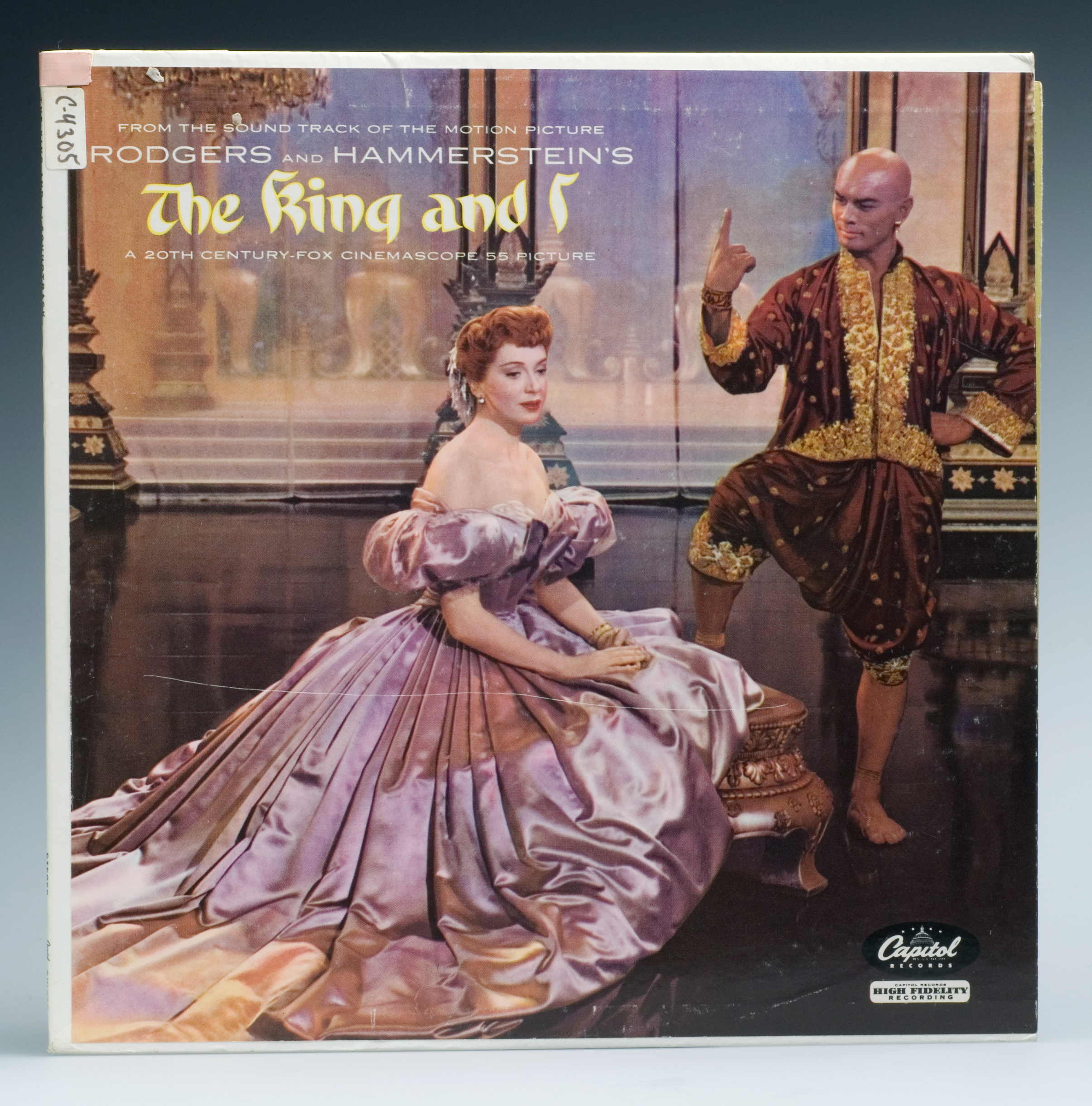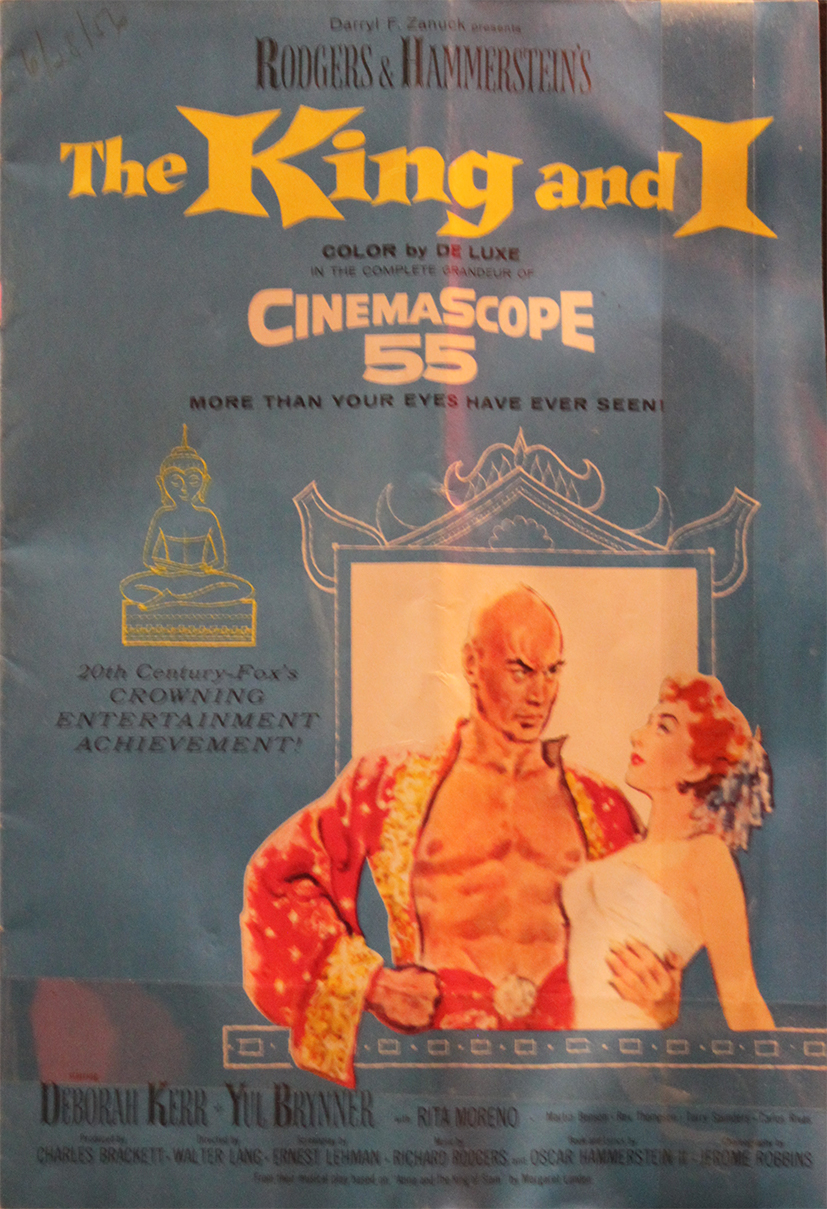Souvenir Book for The King and I, 1956


About
A soundtrack album for The King and I depicts a man with East Asian-features gazing at a white woman wearing a fine ballgown. The titular King in the 1956 musical film adaptation of the 1951 stage musical was played by Yul Brynner, a white actor of Russian descent, who wore dark makeup and eye tape to approximate East Asian features.
Yellowface has been an acceptable practice in Hollywood, all the way up to the present day, where it’s still not uncommon to see white actors portraying Asian characters, with a recent example in Scarlett Johansson as Motoko Kusanagi in the 2017 live action adaptation of Ghost in the Shell. Its status as a standard and largely unquestioned practice was solidified through a combination of the difficulty faced by Asian-American actors to find footing in the entertainment industry (especially during and post-WWII) and anti-miscegenation laws and cultural discomfort around interracial relationships, particularly ones involving white women. This made it difficult for male Asian actors to be cast as love interests for white actresses (see Sessue Hayakawa) – casting white actors like Yul Brynner and Rex Harrison was a common way of sublimating this taboo.
Tags: Film, Orientalism, Yellowface
Further reading
Wikipedia for examples of yellowface in media: https://en.wikipedia.org/wiki/Examples_of_yellowface

